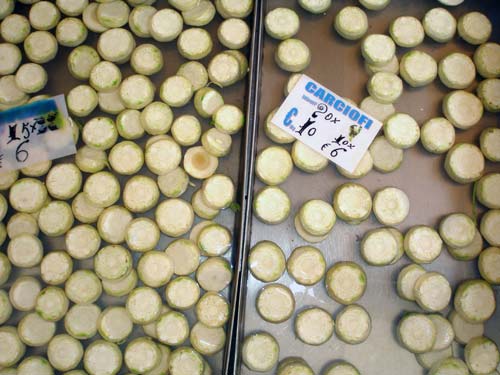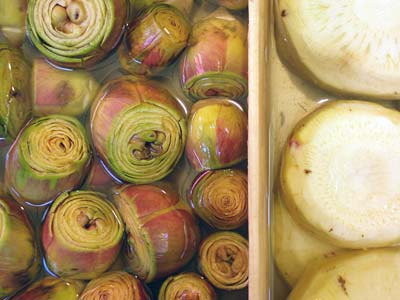
Artichoke bases are prepared by breaking off the stem of the artichoke by bending it until it comes off the base. Cut the base flat and then remove the leaves. Trim the outside of the heart and then remove the choke, being certain to remove all last traces. Rub the heart with lemon to prevent it from discolouring. These are sometimes referred to as artichoke hearts, that are from young artichokes in which the bracts have not yet formed the choke and are included with the base.

Artichoke base. These are prepared by breaking off the stem of the artichoke by bending it until it comes off the base. Cut the base flat and then remove the leaves. Trim the outside of the heart and then remove the choke, being certain to remove all last traces. Rub the heart with lemon to prevent it from discolouring. These are sometimes referred to as artichoke hearts, that are from young artichokes in which the bracts have not yet formed the choke and are included with the base.

Artichoke hearts are revealed with all the leaves and the choke are cut away to liberate the heavenly core of the artichoke. If you are lucky, you might live somewhere where this is freshly done for you, as in the Rialto Market in Venice
Artificial sweeteners are substitutes for sugar, usually chemical. Natural substitutes are generally referred to as "sugar substitutes." Saccharin and aspartame are probably the best known artifical sweeteners.
Punch made from rye, bourbon or whisky, dry red wine, strong tea, Jamaican rum, orange juice, brandy, gin, Benedictine, sugar and lemon juice.
Snake palm. A plant with a glutinous, starchy tuber which is used to make translucent shirataki noodles and konnyaku, a black bean curd.